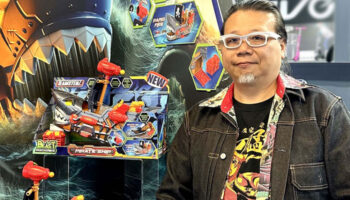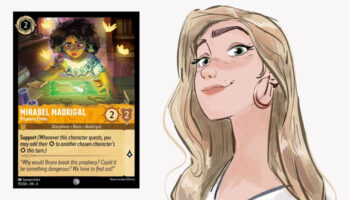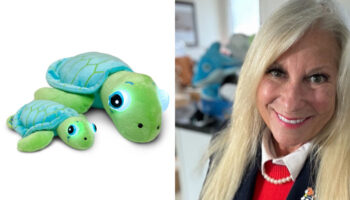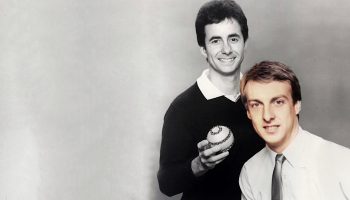Dominique Roy discusses the art, craft and development of two new Make It Real products

In Nuremberg, Dominique, you showed us an extraordinary Make It Real pottery wheel… That was better than a pottery wheel! Tell me: how did that idea come about?
I was watching reels on Instagram and saw a video of someone throwing a mini vase on a normal-size pottery wheel. Initially, I thought it was some sort of a stunt… Someone having fun doing tiny things on a huge wheel. Then I started to make some competitive research about pottery wheels for kids and realised that mini-pottery was a thing – at least for adults. As a result, I bought one mini-wheel and start playing with it.
Successfully?
Oh, no. My first end result was just terrible… And barely looked like an ashtray.
Ha! Well, my experience of pottery is limited, but – as I recall – it’s quite difficult to do. Which is why this invention interests me, because there are a couple of things that make this very toyetic. First, kids had much more control over the clay than they would with a pottery wheel. How come?
I was lucky enough that the first clay I bought was terracotta, which is quite hard compared to the usual clay. Soon, I realised that I was getting better results at high speed and when carving instead of modelling, like traditional pottery.
From there, we designed it with the goal of allowing kids to get good end results out of the gate, but also providing the opportunity to master pottery and be able to make totally freeform things. I did also realise that centring your piece at the beginning of the process was very time consuming and difficult. In fact even adults taking lessons would have a hard time to perfectly centre their pieces.
Right – because if the clay isn’t right in the middle of the wheel, it’s almost impossible to make something recognisable!
Right! So we then came up with the design of our centring tool… It allows kids to easily centre the clay and – most importantly – get to the fun fast.

Yes, very good – that’s exactly it; isn’t it? The kids feel they’re making progress quicker. Also, the motor on this thing is whisper quiet… Very wise, I think, given how infuriating parents might otherwise find it! How important was that to the design?
We design products so kids have fun and a rewarding experience, but keeping in mind that they should not be an annoyance for the people around… And especially the parents who usually pay for it. The goal is to design a product that will be used and reused for a long period of time. Personally, what drives me is to design toys that would generate instant emotions and everlasting memories…
Instant emotions and everlasting memories…
For that, the play experience needs to be interesting on the long run too, it can’t be solely designed around getting a TV moment. If using it become an annoyance, because of noise as an example, it will certainly miss the target.
Great. And how did you – I’m really curious – did you get that Motor so quiet?
There is a bit of luck here too! Because we’re doing mini-pottery, and we operate at a quite high RPM, we need more speed and less torque than normal pottery wheels. This allowed us to get rid of the usual gearbox that gives more torque and is a prerequisite for a normal size pottery wheel. The motor’s attached directly to the wheel, and this is how we get a quite silent experience… And allows us to reassign some of that budget in the product.
And I thought talk was cheap. Tell me, Dominique, what else is worth mentioning in the execution of the idea?
Maybe the styling of the device… Which is not too toyish. We knew quite soon that this product would appeal to a very large audience. The first time we showed it to a retailer, they immediately asked to see a boy on the front of the box. The focus groups we did confirmed the need to be gender inclusive. Furthermore, many adults told us “I want one for myself!”.
Do you know, I was just wondering about that!
We often talk about the ‘age compression’ phenomena in the toy industry. I feel the same way… Nowadays, kids better appreciate good design. They’re surrounded by exquisitely designed smartphones and computers… What they aspire to at an impressively young age is less and less products adopting a toyish aesthetic.

Great insight! Love that. What else is new, Dominique?
Oh! This coming fall, we’re launching Party Nails!
Ah, yes! Tell us about that! What are the design features that make it unique?
It’s such an easy product to demo… Live, I can do it without saying a word and people get it! It’s a motorised device that allows you to magically apply glitter on fingernails. It’s designed in such way that there’s barely any waste and the process… Well, it’s quite magical.
Yes, I’m sympathetic here: our words may not do this justice! Because it is like a magic trick in a way…
Yes! So with Party Nails, you apply a sticky base on your nail and immediately put your finger in a specially designed capsule. You press on the base button and a cloud of swirling glitter allows you get a thin layer of evenly distributed glitter in seconds.
Right; it creates a little whirlwind of glitter – but it only goes only on the fingernail!
Exactly. And because glitter can be very messy, we integrated a membrane to the porthole so the glitter pieces don’t escape while flying around inside the capsule. Furthermore, the very initial design commanded the user to reload the capsule when they wanted to change colour… We realised this was very messy, so we added one turbine in each one of the five capsules. The turbine is the part that creates the glitter vortex… So the glitter manipulation is reduced to a minimum! This is really instrumental to get a mess-free play experience.
Brilliant. Very, very clever, Dominique; I absolutely love it. Alrighty…Let’s finish off with a question I neglected to ask you the first time we spoke… What toys and games did you play with when you were growing up?
I will betray my age here. I had that toy called Billy Blastoff when I was three years old.

Billy Blastoff? You’ve got me, there; I’m not familiar with it…
It was an astronaut action figure with some kind of a wheeled vehicle. This was in the 60s; right in the middle of the race to the moon between the Americans and the Russians. I’m French Canadian and, at the time, was unable to read advanced English. So in my mind the character’s name was Billy Bastroff… which sounds much more Russian and exotic. It was only many years later, while trying to find info about the toy, that I ‘discovered’ the real name. It was almost a disappointment!
Wow! That’s one of life’s small, quiet tragedies! Thanks for sharing your pain with us, Dominique; much appreciated.
–
To stay in the loop with the latest news, interviews and features from the world of toy and game design, sign up to our weekly newsletter here
























